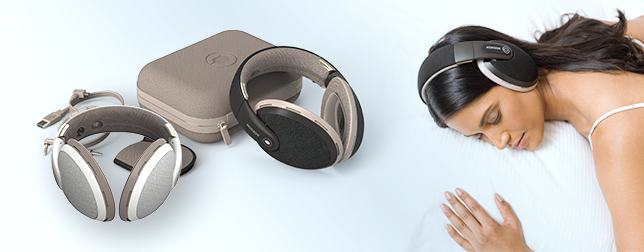Kokoon sleeping headphones was the winner of the IWC 2015/2016 for the Gaming and Lifestyle category. We interviewed their CEO Tim Antos to learn more about them. If you want to try them live make sure to register to our upcoming WT | Wearable Technologies Conference 2016 Asia in Hong Kong on October 12 where they will be exhibiting!
1. How did you come up with the idea of brainwave-sensing headphones?
“I couldn’t sleep! I was having a very busy and stressful period at work which led to some sleep problems. I consulted a sleep clinic and was recommended audio techniques to try. They audio worked great, but traditional headphones were simply not up to the job – I needed something much more comfortable. From there, Kokoon was born and we worked to not only make comfortable headphones for sleeping, but also include technology to monitor and improve sleep and relaxation. There are many exciting applications for our technology and sleep is just the start.”
2. How are the headphones working and how they can help you to fall asleep and possibly trigger lucid dreams?
“Our mobile app includes many audio techniques. You can either use these to help relax and fall asleep or use whatever external audio you want. We’ll measure and learn how effective your audio is over time and make recommendations. Once you’re asleep, our disturbance protection helps make sure you’re not interrupted. The headphones have active noise cancellation, noise isolation and also active white noise, between them they make sure you can get a sound night’s sleep. Thanks to our brainwave sensing, we can the find the best time to wake you up – the lightest point in your sleep cycle whilst also making sure you’re not late getting out of bed!
Regarding lucid dreaming, it’s something Kokoon can help with, though it’s not something we’ll be targeting at launch. But with a combination of our brainwave sensors and the headphones themselves, an audio cue could be delivered to a user when they are dreaming. Applications like these are exactly why we will be making our API and SDK free and open to enthusiasts to allow them to develop this sort of functionality and more on our platform”
3. How does the app work combined with the headphones? Can users choose their own music to fall asleep or are the sounds pre-determined?
“As I mentioned earlier, it’s really up to the user. Our app includes a collection of audio which is free to users. We have worked with sleep professionals and music psychologists to produce audio which will help users relax and switch off. We will be building this library out over time as we learn more and more about what helps people sleep. However, you can also use the headphones for any audio. Audio for sleeping can be very personal so we wanted to make sure that if you’ve already got some favourite techniques you can use that too. So you can use your favourite music app or even audio books if that works for you.”
4. Some people move a lot during their sleep. How is Kokoon headphones not disturbing them when they move their heads while sleeping?
“This is something we’ve spent a long time working and perfecting. By focusing on spreading pressure evenly away from sensitive areas, keeping the headphone very low profile and enabling air circulation in the cushioning we’ve managed to make sure the design remains comfortable and cool. We’ve tested hundreds of design iterations across many different heads and optimised right down to the specifications of each individual material.
5. What’s your favorite wearable besides your own one?
“A very hard question! The pace of innovation in this market is fantastic and it seems new devices come around regularly. I’m not sure I could choose one favourite, but what I will say is those I find most exciting are those which actually ‘close the loop’ and make some sort of change to a user or their environment based on the data they are collecting. These are the devices which will really have a positive impact on people’s lives.












